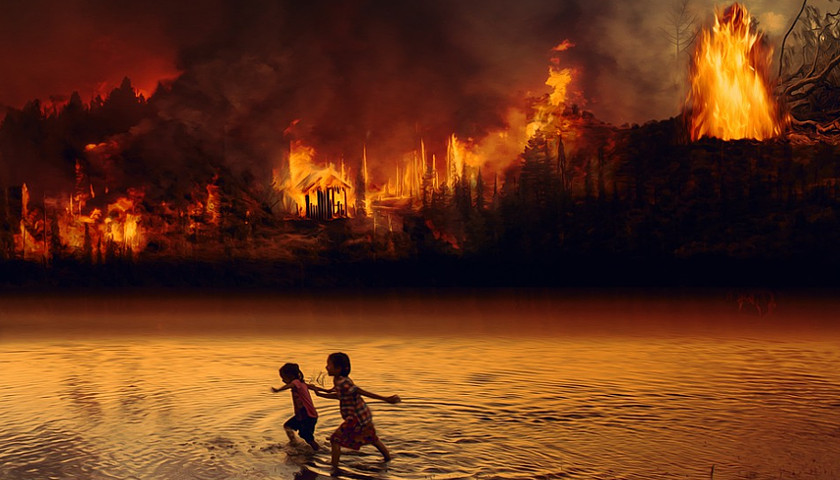by Dr. Ryan Maue
The international news coverage of Brazil’s Amazon rainforest fires has been a complete disaster. News outlets published inaccurate yet easily verifiable “facts” about the number of fires, declaring the situation “record-breaking” and “unprecedented.” Social media lit up with misleading claims about the loss of planetary oxygen supply (20 percent, said French President Emmanuel Macron) threatening to asphyxiate us all. Stock photos and images of forest fires from the last two decades including Peru and Bolivia were shared widely and wildly. Celebrities and politicians alike heaped condemnation upon Brazilian President Jair Bolsonaro leading to an ongoing geopolitical crisis.
The origin of this Amazon fire crisis traces back to the beginning of August, when Bolsonaro sacked his Space Institute minister for publishing worrisome data about the 2019 fire season. The dry season in Brazil typically runs from August to November, as farmers use these months to burn dried-out timber previously cut during land clearing operations. Ranchers also prepare the land for cattle grazing.
An important point to remember about these fires, however, is that the rainforests themselves are not entirely or uncontrollably ablaze. Natural fire does not typically occur in these tropical forests due to suffocating humidity, wet dense foliage, and daily thunderstorms. What is burning right now is land near the forests where farmers and ranchers have cleared hundreds and hundreds of acres of trees. This is easily seen in satellite imagery, which scientists finally examined and compared to the past two decades.
The New York Times pumped the brakes on the misinformation and published a highly informative map showing the location of the fires on previously cleared land obviously related to farmers and ranchers.
The Brazilian state of Mato Grasso has been transformed into an “ocean of soybeans” the size of Iowa. On the periphery, the land is cleared at the rate of 2,500-square-miles annually.
This deforestation peaked in the 1990s but lessened significantly over the past 10 years. There is evidence, however, to suggest Bolsonaro’s government had cut back on enforcement measures against illegal fires and land-clearing activities. The initial reports about the beginning of fire season sent the international community into a panic, led by the Europeans.
The number of fires and cumulative area burned so far in 2019, on the other hand, is on par with previous years and described as “near average” by NASA.
European news outlets already had an enemy in Bolsonaro with his nationalistic and anti-globalist sentiment. Conversely, Brazilian leaders, including officials in the military, pushed back against European colonialist rhetoric threatening the nation’s sovereignty. A full-blown international crisis expanded into threats of scuttling a major EU-Brazil trade deal and cancellation of foreign aid to prevent deforestation.
The importance of the Amazon rainforests to global climate action was exemplified by the extreme reaction and rhetoric of European elites. Bolsonaro was compelled to order the military to help fight the illegal fires. Yet, we should not turn a blind eye to the motivations of the Brazilian government to open the Amazonian frontier for development.
The chain reaction of misinformation is easily visible in real-time especially with climate change related narratives. All it takes is one misleading headline, such as the Guardian’s “12-years left to avoid climate catastrophe,” to set off an uncontrollable cascade of virtue signaling and outrage. Celebrities and politicians amplify the message on social media. Non-governmental activist organizations swoop in to manage the narrative.
Sometimes journalists are responsible for initiating misinformation, usually due to sloppy fact-checking. But often there is a more fundamental breakdown in the coverage of environmental news: the outrage and hysteria is self-reinforcing and all in the service of stated and approved goals of an agenda-driven activist media. Awards and plaudits are showered upon journalists or scientists themselves who consistently exaggerate the links between climate change and extreme weather. The next doomsday deadline is right around the corner.
How can you detect misinformation in the mainstream media when it comes to environmental news coverage? Large outlets like the New York Times, Washington Post, and Associated Press employ professionals with teams dedicated to fact-checking the numbers and data provided by government agencies and scientists. These are not millennial bloggers looking to impress their friends on Twitter.
But what about the opposite end of the spectrum where editorial standards are completely missing? Here, climate change news is an exercise in political outrage almost always aimed at President Trump. You are right to question their motivations and you should not trust them for an honest, good faith appraisal of the facts.
More importantly, conservatives should not cede this battleground to the activists. Destruction of the rainforest and climate change are critical issues that demand honest and fair media coverage, not kneejerk outrage.
– – –
Dr. Ryan Maue is a private sector meteorologist with almost decades of experience in the field.





